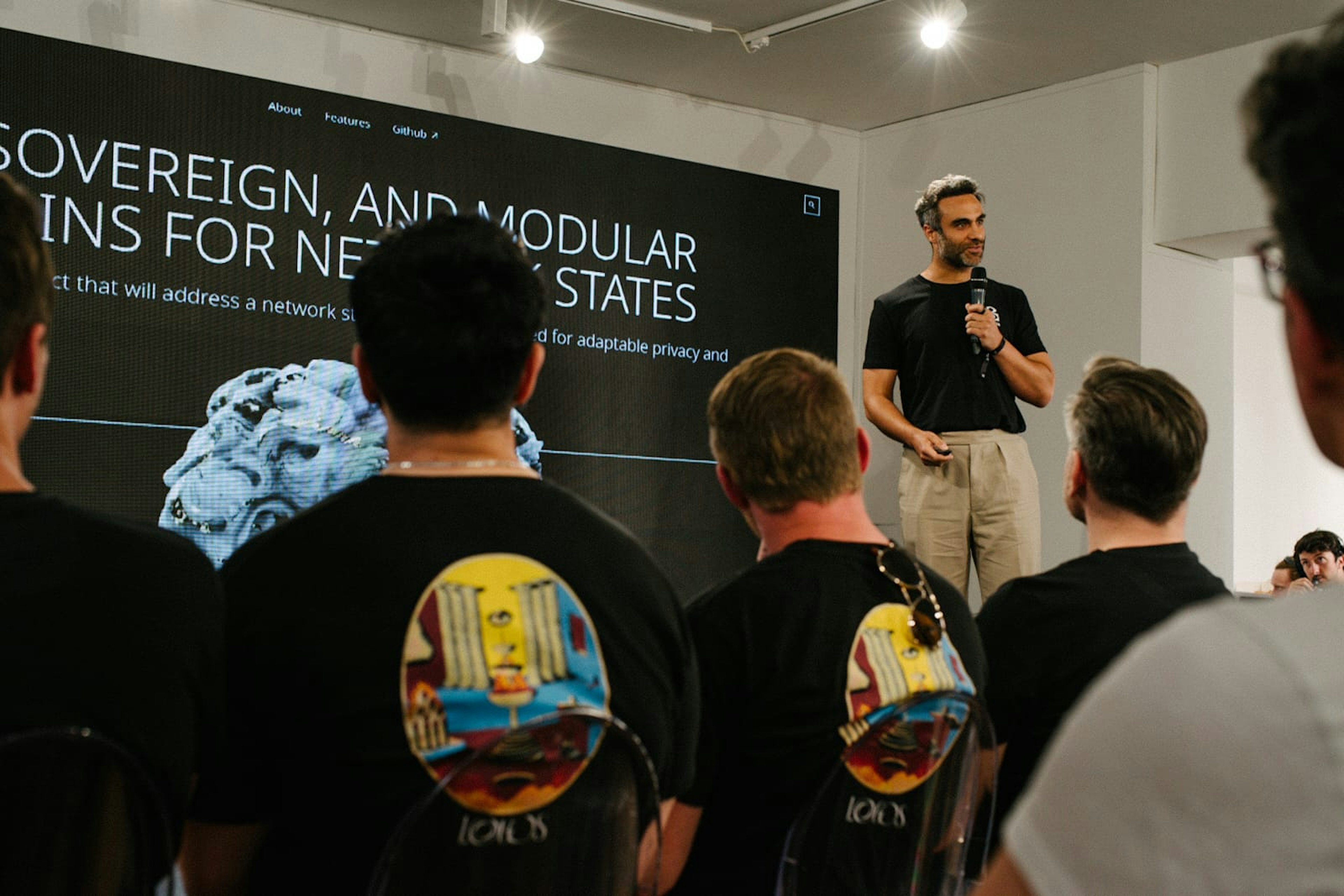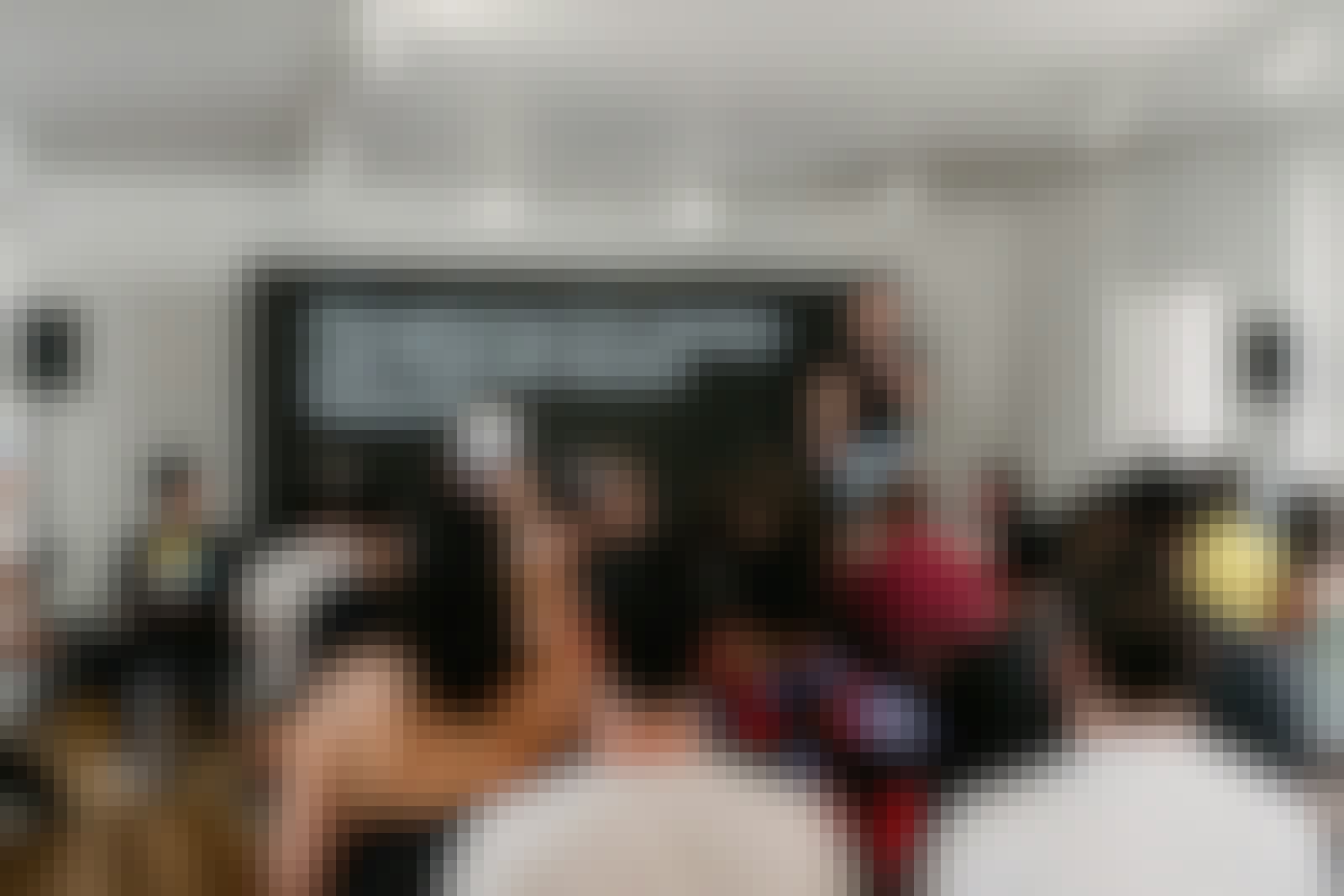State of the Logos Network: October 2023
Logos mobilises, Waku scales, Codex at Stanford, Nomos explores design choices, and Vac publishes zkVM paper
Bathang


Logos recently stepped into the public eye, embarking on the path toward a network-state future. Our ecosystem is a hive of activity, building, refining, and broadcasting the network state thesis and the tech to actualise it. Network State Press rounds up the major developments of recent months in this inaugural edition of State of the Logos Network.
State of the Logos network
Logos is fully committed to transparency and builds in the open. This progress update is intended as a non-technical summary of the Logos projects’ recent achievements, current ongoings, and future engagements. For a more granular and regularly updated view, check our ecosystem roadmap.
Logos
Although many of us have been working on Logos for some time, the collective’s first public outing took place at ‘The Birth of a Network State’ during the Ethereum Community Conference in July. Logos and allied projects occupied Galerie Joseph in Paris for a full-day programme dedicated to Logos’ tech and how it can lay the foundations for a network state future. The event served as a declaration — Logos is alive.


Representatives from Logos, Waku, Vac, and Codex shared the stage with allies from Nym, DappNode, and Spearbit, attracting more than 100 of the network state-curious and the already convinced. Discussions and presentations ranged from the technical to the philosophical, with an inspiring keynote delivered by our co-founder Jarrad Hope, programme lead Corey Petty, and contributors from each of the collective’s core infrastructure teams.
We recorded the whole programme, which you can relive here.


In preparation for our public debut, Acid.info, Logos’ creative studio and memetics lab, revamped core infrastructure projects’ websites and documentation resources, unifying them visually, updating content to reflect recent developments, and affirming their position within the Logos sphere:
Since Paris, our attention remains focused on bringing Logos’ tech and the network state vision to a wider audience both digitally and in the physical world. Regarding the former, we have been hosting bi-weekly X Spaces, which started on 22 Aug. with a conversation between Dmitriy Ryajov, the project lead for Codex, and Dr Goemon, Logos’ activism and campaigns director. The two discussed using peer-to-peer tech to put network state political philosophy into practice. Subsequent Spaces have featured Logos programme lead Dr Corey Petty, author and Logos content writer Sterlin Lujan, and Matty and Frederico from Logos’ tokenomics department. Future editions will feature expert guest speakers on relevant topics from within and outside of the Logos sphere.
Follow Logos on X for more information.
Meanwhile, Acid.info’s events management division has supported Logos representation at this year’s ETHRome, Hackers Congress, and the PoW Summit, with Jarrad speaking at each event. We are currently working to secure more speaking and sponsorship opportunities at upcoming conferences to continue raising awareness of our tech stack and mission. Expect further updates in future State of the Logos Network editions as the schedule fills out.
Finally, we have been building and populating the collective’s publishing department, Network State Press. The site will serve as a vehicle through which we nurture and advance the network state narrative as it picks up steam with thought-provoking written content from Acid.info’s in-house team and guest authors. Meanwhile the Logos State podcast will cover political and philosophical topics surrounding the network state thesis and the existing Hashing It Out podcast (now published on Network State Press) will continue to focus on technical content.
Please follow the publication on X here.


Waku
Waku is a suite of modular protocols built for generalised, privacy-preserving communication. It provides the messaging layer of the Logos tech stack, ensuring network state citizens and technologies can share data with one another without fear of surveillance or censorship.
Already in production and adopted by users like the private messaging super-app Status, the Ethereum-based private transaction system Railgun, and other principle-driven applications, Waku is the most advanced of Logos’ infrastructure stack in development terms. Having proved its efficacy on a small scale, Waku’s primary goal for 2023 is to securely support more than one million users while encouraging wider adoption and ecosystem growth.
Waku accomplishments
Waku has recently delivered software solutions to enable the support of at least 10,000 active users. The team is now focused on pushing the limit to a million users through the design of new protocols. For each step, large scale simulations will back up the theoretical analysis undertaken, the next of which involves running a single GossipSub network with 10,000 nodes. To reach the scale required to support Status and other web3 applications requiring decentralised, off-chain communication, Waku will be composed of several of these networks.
Waku community building
Beyond scaling, the team continues to nurture a strong builder community around its communications protocols. Further updates to Waku’s documentation site mentor developers through integrating Waku in a variety of DApps. Additionally, the team is working on a whitepaper to formally define the network.
Recent months have seen Waku step up its representation of the conference circuit, too. Several team members were involved with ETHRome. Waku sponsored the main hackathon and gave a workshop on the communications protocols, hosted the Privacy Soirée side event with Railgun and Crypto Canal, and presented Waku at the warmup event Web3 Privacy Now. Before ETHRome, Waku contributors spoke at DeCompute with Silence Laboratories in Singapore and ETHSafari in Kenya. Finally, the team also presented at Web3 Conference India and co-hosted two side events with Obscuro and Hyperlane during the four-day get together in Goa in August.


Codex
Codex is the storage and archiving layer of the Logos tech stack. Once launched, it will provide extremely high data durability guarantees, guarding the archive to ensure only those maintaining network state records control it. Codex is designed specifically to prevent data loss in adversarial conditions and leverages a robust combination of technologies to remain efficient and cost-effective while doing so.
Codex accomplishments
Currently, Codex’s development efforts focus primarily on its second proof of concept client, codenamed Scimitar, for which work on the zero-knowledge proving scheme required to engineer a viable storage marketplace remains. Meanwhile, development continues on other components needed for a third proof of concept before the v1 release in 2024, including various data discovery optimisations and proof aggregation elements for a prototype of a zero-knowledge remote auditing scheme. Additionally, the team is currently putting the finishing touches to and reviewing the Codex whitepaper, which is due for release in the coming weeks.
Central to Codex’s data durability guarantees is the ability to efficiently sample data stored by nodes across the network to ensure its availability for retrieval. The problem is not a trivial one, as anyone who has followed the Ethereum Foundation’s data availability sampling research will understand. Consequently, Codex is currently engaged in DAS research alongside the EF, with the aid of a grant received earlier this year. The most recent development regarding these research efforts is the publication of a blog post focusing on organic big blocks on Ethereum and the diffusion of these outsized blocks across the network. The ongoing research will support Ethereum’s scaling efforts and inform design considerations for the Codex network.
Codex community building
Although the team is heads-down building the first version of Codex, core contributors have been raising awareness about the storage engine within the cryptocurrency sphere and beyond it. The team rounded off August by speaking at KademliaCon, which followed The Science of Blockchain Conference at Stanford University. Codex core contributor Csaba Kiraly delivered a presentation titled ‘Transforming Kademlia code to large-scale DAS simulation’ alongside talks from representatives of the Ethereum Foundation, BitTorrent, Protocol Labs, Celestia, and others.
Before Codex’s involvement with The Birth of a Network State and Dmitriy’s Logos X Space appearance, core contributor Leonardo Bautista-Gomez presented on design choices in DAS at EDCON 2023 in June, and Csaba spoke for ETHZurich on DAS from the networking perspective.
Additionally, Codex has also launched a YouTube channel to help community members operate the storage engine, showcase the team’s achievements, and understand the network’s design choices. The channel already has multiple videos uploaded, including conference presentations, content relating to the team’s DAS research, and tutorials on running Codex, and will be updated regularly.


Nomos
Nomos is the consensus and trustless agreements layer of the Logos tech stack. When in production, it will lay the foundations upon which aspiring network states can deploy sovereign governing, financial, and social services that reflect their citizens’ values more fully than those mandated by the nation-state system. Privacy-enhancing mechanisms are consistent throughout the network’s design to protect all participants, from the validator level up.
Nomos accomplishments
Nomos is a massive technical undertaking that combines numerous novel cryptographic techniques. As such, it is still in the very early stages of research and development.
The team is currently drafting two whitepapers: the first provides an overview of the network’s proposed architecture and the second is dedicated to the privacy-enhancing techniques used throughout to ensure the protection of user rights through absolute neutrality. Beyond formally defining Nomos’ design in these documents, the team is exploring options for the network’s base layer architecture while analysis of the Nomos node prototype’s performance at progressively larger scales through network simulations is ongoing.
The design space Nomos will inhabit is uncharted and the network must uphold a specific set of principles regarding user privacy and sovereignty, meaning unanticipated issues frequently arise. What’s more, the team is still small, complicating the roadmapping process further. However, future editions of ‘The State of the Logos Network’ will provide updates on expected delivery dates for objectives mentioned — such as the publishing of the two whitepapers currently in progress — and those still to be defined.
Vac
Vac is central to the research and development efforts of the Logos collective. The team studies problems at the cutting edge of distributed systems, blockchain technology, and ZK-proofs in the open for the benefit of the Logos and wider decentralised web movements. Vac’s focuses emerge from the Logos collective’s guiding principles: liberty, censorship resistance, security, privacy, transparency, openness, decentralisation, inclusivity, continuance, and resourcefulness.
Although Vac consists of various subgroups — Deep Research, R&D Service Units, Incubator Projects, and the RFC Unit — there is close collaboration between sets of subgroups. Currently, Vac Deep Research is studying the following broad areas: zero-knowledge proof systems, validator privacy, and Libp2p GossipSub improvements. The unit’s efforts support the entire Logos ecosystem directly and via Vac’s Service Units. Furthermore, its work has spawned incubator projects such as a zero-knowledge virtual machine for privacy-preserving computing.
Vac accomplishments
A recent significant achievement of Vac’s was the publication of a paper detailing Nescience — a zero knowledge virtual machine designed to provide a user experience similar to contemporary public blockchains but with robust privacy features. The post, authored by Vac zkVM research engineer Moudy Ellaz, outlines our progress toward a privacy-preserving, general-purpose execution environment.
Another notable accomplishment was the P2P Service Unit’s completion of a major milestone with the release of improvements to the Nim libp2p implementation it maintains. All necessary optimisations in preparation for Ethereum’s forthcoming EIP-4844 upgrade are now complete. Meanwhile, the group’s Applied Cryptography and ZK Service Unit released Zerokit v0.4.0 — a set of Rust zero-knowledge modules. The changes made since v0.3.1 enables RLN-v2 to be used more flexibly than v1, which previously only allowed users to generate one valid proof per epoch. Alongside this, the ACZ unit continues to optimise RLNP2P to ensure Waku is production ready.
The Distributed Systems Testing Service Unit is currently undertaking network analysis on Waku, Codex, and Status, and has recently completed a technical report titled ‘Scaling the Waku Protocol: A Performance Analysis with Wakurtosis’ and is drafting an accompanying blog post to break down its findings. The Smart Contracts and RFC Service Units are primarily supporting Status ahead of its forthcoming major upgrade. The former has been preparing Community and SNT staking contracts while the RFC Unit is updating Status specifications. Concurrently, the Tokenomics Service Unit is also involved with the Status app upgrade while undertaking economic analysis of Waku, Nomos, and Codex.
Vac Deep Research is working on validator privacy; GossipSub improvements; Carnot, the proposed consensus mechanism for Nomos; and bribery attacks against consensus mechanisms — particularly Carnot. Additionally, the department has published a paper defining Carnot, and is developing a Tor Push integration for the Ethereum consensus client Nimbus.
Join the movement
With The Birth of a Network State lighting the Logos torch, we are keen to connect with individuals willing and able to help us put our ideas into practice.
Join the network state discussion on Discord.
Logos
Corey Petty